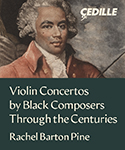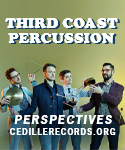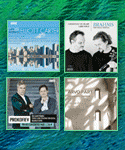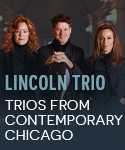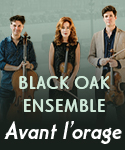Guggenheim Museum, New York; Jan 11, 2008
The Guggenheim Museum’s Peter B. Lewis Theater was host to American Opera Projects’ and Works & Process’ presentation of four works: three by the Estonian minimalist Arvo Pärt and one by the British-born, New York based Tarik O’Regan (who named Pärt as one of his inspirations). The 75 minute show was sometimes puzzling, sometimes riveting and always interesting. As always, AOP’s experiments require attention.
The puzzling part was first. Arvo Pärt’s “L’abbé Agathon,” for which he also wrote the text, is scored for four violas, four cellos and soprano, and tells the tale of an Abbé on his way to market to sell his humble wares. He meets a leper who asks to be taken with him and he agrees. With everything he sells, he buys something for the leper, at the leper’s request. The leper then asks to be taken back to where he was found and explains to the Abbé that he, the Abbé, is now blessed, for the leper was an angel of the Lord “come to put him to the trial.” The work is austere, with the opening strings imitating the slow tread of the aged Abbé, some quiet, voiceless passages of reflection, and an ecstatic ending for solo soprano as the angel is revealed. Asked to “direct” this 13 minute piece was the French poet Sophie Calle, who chose to juxtapose it with a film of her mother’s death and a narration: what seemed like a still of an elderly woman lying peacefully in bed amidst flowers and a cute stuffed animal was actually a film of the woman’s last 13 minutes; at the end two people check for her pulse and breath. On top of the music, Ms Calle told the story of how this came about, a detail or two about her mother’s life, her final wishes and desire to be “center stage.” While there was surely something moving about the performance, one was left with a desire to experience the Pärt more clearly, without voice-over. And if Pärt’s piece is about giving and salvation and Ms Calle’s is entirely secular and most specifically about her mother, why put them side by side? The audience learns something from “L’abbé…;” it feels like it walked into a stranger’s wake with Ms Calle. A not altogether successful experiment.
“Liturgy,” to choreography by Christopher Wheeldon was next, with Pärt’s frequently re-arranged “Fratres” as musical backdrop. A recording of the work for solo violin, strings and percussion was piped over the theater’s awful sound system, but danced beautifully by Wendy Whalen and Albert Evans, two substantial, handsome dancers. Their simple arching and gentle lifts ideally mirrored Pärt’s string motions but the angular, yoga-like poses stumped this viewer. The program’s final work, “After the Rain,” also by Wheeldon, was danced to Pärt’s “Spiegel im Spiegel” (another recording, tinnily reproduced), and was an object lesson in legato, uninterrupted beauty, with Ms Whelan here partnered by the sturdy but sensitive Sébastian Marcovici.
Tarik O’Regan’s work-in-progress, “The Woven Child,” scored for the same combination of strings and soprano as “L’abbé Agathon,” came between the dances. Set to a poem by Anna Rabinowitz called “The Sky Arrives,” its mystifying text concerns the soul and body – the unreal made tangible – and uses imagery of weaving a web and to imply strength of character: “Oh woven child/you must not unravel.” The award-winning O’Regan, whose latest CD, Threshold of Night, debuted at #10 in the American Billboard chart and was nominated for two Grammys, has written music for it that is sometimes ostinato-based, often busier, and comfortable for the voice, whether in melismatic, mellow passages or high-flying reaches for life, ending on a stunning pianissimo A natural. If not instantly approachable – as the poem is not – it certainly has its appeal.The AOP String Ensemble played well under J. David Jackson and soprano Caroline Worra was good in the Pärt and superb in Mr O’Regan’s piece.
Robert Levine























